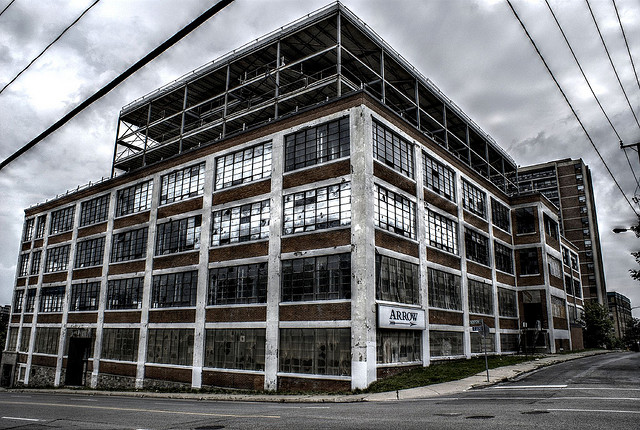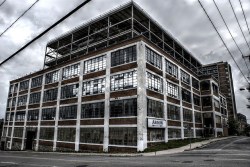In the 12 years since the debut of LEED certification, the green-building stamp of approval has become the holy grail for every earth-loving contractor and home-builder. But while brand-new, Dwell magazine-worthy eco-structures are a flashy way to highlight new construction practices, the greenest buildings, it turns out, are almost always old ones. By fixing up an old building, you’re saving the planet all the costs of growing, manufacturing, and shipping new building materials all over creation, putting yourself decades ahead of a new building in terms of mitigating climate impacts.
LEED has a special set of awards (silver, gold, platinum) for existing buildings that have energy efficiency retrofits and other upgrades, but these rising energy-saving superstars haven’t seen much limelight — until now. Next month, the first annual EBie Awards will recognize impressive environmental performance improvements in existing buildings (existing buildings – E.B. – get it?).
“There’s not been enough recognition of the talent and skills that go into making effective change through existing buildings,” says Russell Unger, executive director of the Urban Green Council, which created the awards. “By bringing these incredible case studies to light, we’re hopefully encouraging duplication. People will start asking themselves, ‘Why can’t I do that, too?’”
The shift in focus from new green building to retrofitting existing buildings is already underway, spurred by a lack of capital for new construction and a realization of the huge benefits of rehabbing older buildings. Unger says that last year alone, New York City had 22 LEED-certified existing building projects, compared with 24 over the previous four years.
One of the main reasons these projects haven’t gotten more attention is their total lack of sex appeal. The 18 EBie finalists include an elementary school, a hospital, an art museum, and an affordable housing complex. If these buildings have one thing in common, it’ that they look more or less the same as they did before.
Hollie Brown is a project developer for Schneider Electric, which did a retrofit for the Dallas Museum of Art, one of the finalists. She doubts much of the Dallas public is even aware of the impressive changes their museum underwent — a testament to the skill of the construction team, but also an example of how under-the-radar green retrofits remain, in part because they achieve such significant savings through practically invisible changes. The retrofit involved implementing strict humidity controls, important for the art’s physical preservation, and had to take place without disturbing the exhibits.
“None of the retrofits [we made] were terribly exotic,” says Marc Zuluaga, director of multifamily energy services for Steven Winter Associates, which oversaw the rehab of a Brooklyn affordable housing complex, another finalist. The apartment building got new windows and a more balanced, functional ventilation system, both of which subtly improve comfort and quality of life for residents in addition to lowering the owner’s energy bill. But “it’s not necessarily something that tenants feel or see on a day-to-day basis,” Zuluaga says.
Just because these retrofits are not immediately visible doesn’t mean the savings they achieve are minor, however. Unger says that when the judges decided on a scoring scale, they assumed the highest energy savings they’d see would be 40 percent. But multiple projects showed savings of more than 50 percent.
By helping spread the word about these potential savings, the EBies could help convince banks and other lenders that retrofits are solid investments. Brown’s company, Schneider Electric, retrofitted the Dallas Art Museum as part of an energy conservation performance contract, which guarantees the project will pay for itself within 10 years by taking a huge bite out of the museum’s utility bills. Zuluaga’s company, Steven Winter Associates, did a study for Deutsche Bank Americas Foundation and Living Cities to analyze the energy savings achieved by over 200 multifamily housing units, and found the buildings reduced their fuel consumption by an average of 19 percent.
“Almost all buildings are going to have opportunities to improve efficiency that will save money and be a far better investment than the stock market,” Unger says.
With the EBies highlighting the upper end of what’s possible, we should see support for existing building retrofits grow. For this year, though, EBie finalists will mostly enjoy basking in some long-deserved glory. Those who can make it to New York for the awards ceremony on June 28 will enjoy a “VIP day” with a fancy lunch, a tour of the World Trade Center site, and a walk down the “green carpet.” And then they’ll return home to — hopefully — toil in a little less obscurity.
Just don’t hold your breath for the TMZ post-show commentary.




